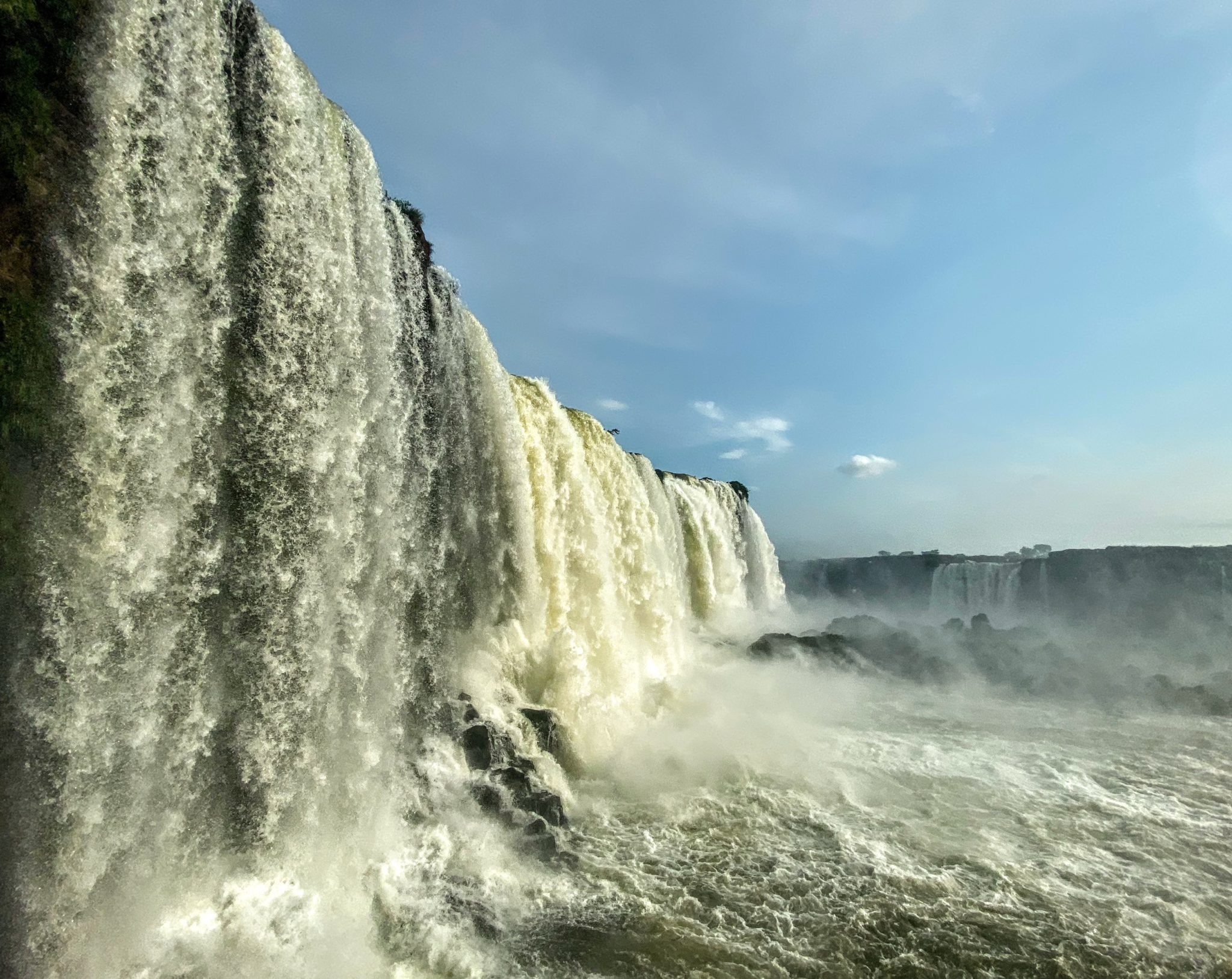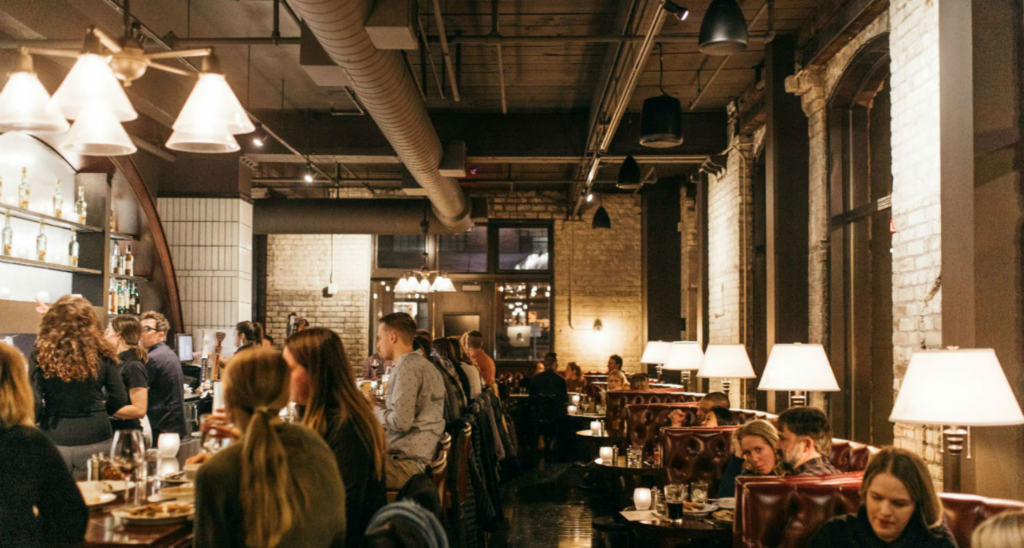December 4, 2019
After more than a week in Namibia, it almost felt like an add-on to end our trip in Zimbabwe, with the Victoria Falls.
It sounded like a tourist draw. A magnificent one, probably, but touristy—at least for as many tourists that would make the long trek and take multiple flights to get to the middle of southern Africa.
Yet here we were, in March 2019.
The Zimbabwe addition ended up being pretty special, mostly because of Matetsi Lodge and the river tours, the game drives, and the al fresco dining in the nearby company of hippos. On the last day, we headed to Victoria Falls for a few hours—because as our guide Dani said, “It’s cool, but how much time can you spend looking at a waterfall?”
We got there for a morning walk up and down the trail, getting soaking wet and admiring the magnitude of the biggest waterfall in the world. While at the Big Falls, we learned there were two other waterfalls considered the biggest in the world: Iguazu Falls and Niagara Falls.
On our flight to Jo-Berg to start home, we looked ahead to trips for the rest of 2019. Uruguay, in South America, was one. And Iguazu was “somewhere” in South America. What if it was in spitting distance of Uruguay? Then that just left Niagara, and we’ve been to less than 30 minutes away from Niagara probably 20 times. That one wasn’t hard.
We smelled a challenge: All three Big Falls in one year.
Game on.
Iguazu Falls
South America is ginormous, so “within spitting distance” is relative. After flipping around a few trip details, we decided to start in Buenos Aires, fly up to Puerto Iguazu (on the border of Brazil and Argentina), spend a few days there, then head back to BA and take a ferry to Uruguay. It sounds like a nightmare, bur for us, it was like grabbing a cab. We’re used to logistical challenges.
Like almost everything else we do, just seeing one of the world’s great wonders wasn’t nearly enough. We needed hiking, biking, mud, dirt, pain, a tiny bit of relaxation, and lots of wine.

Our trip to Iguazu Falls landed us at the Awasi hotel. Awasi, by short definition, is summer camp for adults. (There are a few Awasi hotels in South America, and they’re all the same.) It’s a choose-your-own adventure with all the activities you could dream up (including a trip to the Falls) and all the incredible food and free-flowing drink you want, anytime you want. Great people, and great guides willing to assist with whatever your whim.

We landed in the small airport of Iguazu Falls, and took a short car ride through the national park to Awasi, near the city of Puerto Iguazu, Argentina.
Let’s back up for a second, because the area of Iguazu is a bit of a geographic puzzle.
The massive Parana river creates the border for Paraguay. When the river hits the border between Brazil and Argentina, it takes a 90-degree turn to form the Iguazu River. And about 10 kilometers downstream, the Iguazu River takes a nosedive.
Introducing the Iguazu Falls.
Puerto Iguazu is on the Argentine side; Foz do Iguacu is the town across the river on Brazilian side. Both are jumping-off points to see the Falls.

But first, the rainforest. Awasi is made up of individual villas and a central lodge, each of which feels like a treehouse in the middle of the rainforest. Parrots love to hang out nearby, checking out their reflection in the expanses of glass windows, and you can catch many a toucan sighting.

Awasi itself is more of an experience than a hotel filled with mountain biking, bird watching, hiking, seeing the indigenous villages and, of, course, visiting the Falls. We spent a few days in the lush humidity meeting all the birds, iguanas, and variety of species that live in the area. We ate every meal on the outdoor terrace in the middle of the rainforest, serenaded by the local monkey troops. It was nothing short of a spectacular hotel experience.
But I digress. Back to the Iguazu Falls, and the reason for the boats, trains and planes.
There are two options to approach Iguazu: from Argentina and Brazil. Of course, we chose to do both. After you’ve been to Iguazu Falls, you’ll be asked by those in the know which side you went in and what was your favorite, and we wanted to have an informed answer.
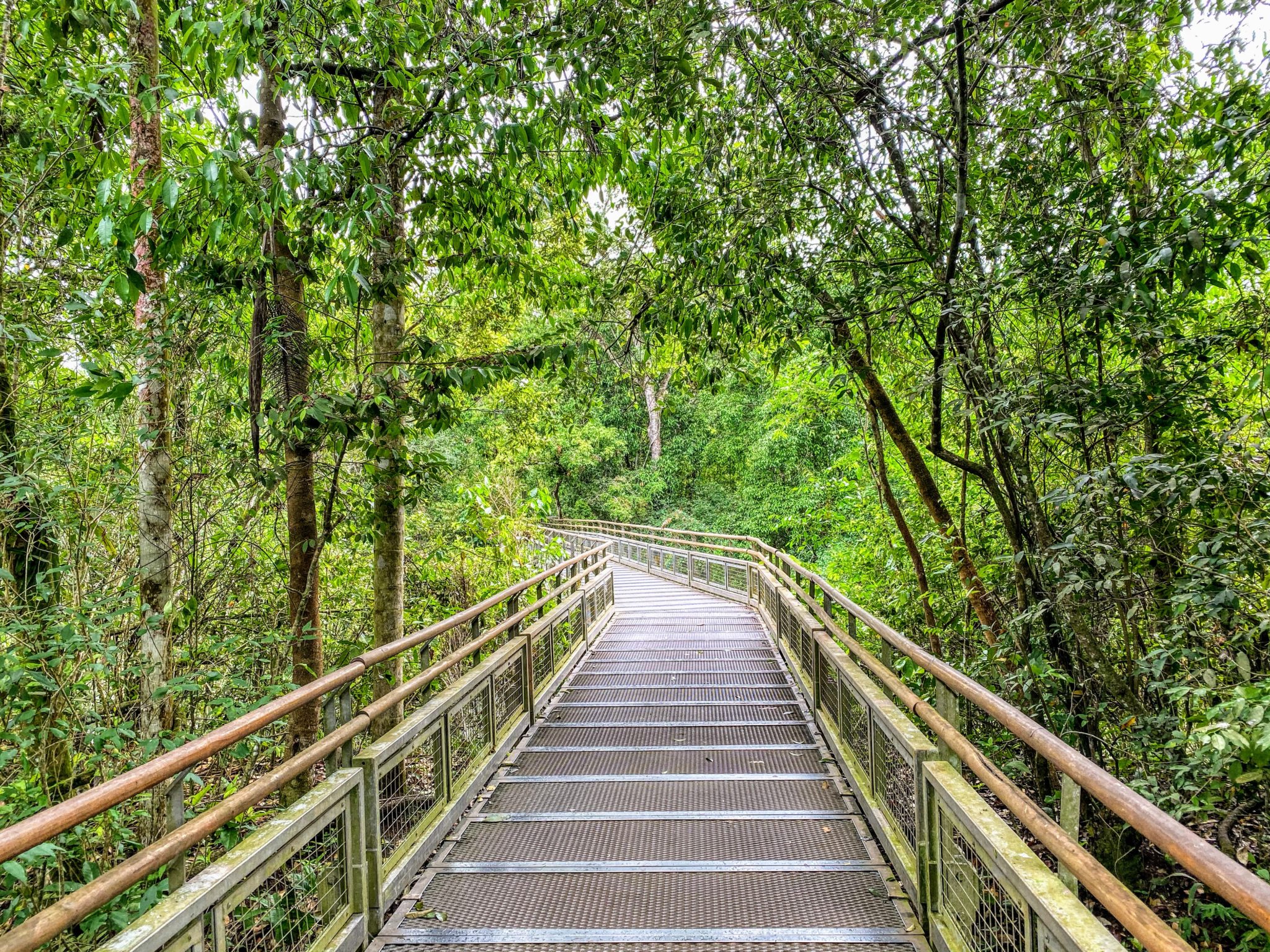 If you go from the Argentina side, the only way to do it is to hike the path starting at 8:00 a.m. from the Melia hotel, past the train station (Melia is the only hotel on the Argentina side with a view of the Falls). After hiking along the river, you navigate a series of walkways over the water for about a mile, until you see the steam coming from the Falls. If you do this, you’ll arrive to the viewpoint of the Devil’s Throat alone. Literally, we were the only five people (us, our two friends, and an Awasi guide) there.
If you go from the Argentina side, the only way to do it is to hike the path starting at 8:00 a.m. from the Melia hotel, past the train station (Melia is the only hotel on the Argentina side with a view of the Falls). After hiking along the river, you navigate a series of walkways over the water for about a mile, until you see the steam coming from the Falls. If you do this, you’ll arrive to the viewpoint of the Devil’s Throat alone. Literally, we were the only five people (us, our two friends, and an Awasi guide) there.


 It wiped out Victoria Falls. It put Niagara to absolute shame.
It wiped out Victoria Falls. It put Niagara to absolute shame.
An hour later, the trains begin to arrive—packed with tourists (who didn’t bother walking the four kilometers) and their selfie sticks. No matter; we had the chance to stand immersed in the sounds and views without any interruption.
From there, we walked the upper path and lower path on the Argentina side, which is more like walking next to and under the falls. Very cool as well, but the private Devil’s Throat viewing was simply magical.
The moral of the story: Always start early and never take a train or bus if you can help it. Visiting touristy sites is fine, but do it on your own terms.
We headed back to Awasi for an incredible boozy lunch before heading over to Brazil. Approaching the Falls from the Brazilian side means passport checks in to Brazil from Argentina and back. Not a big deal, but a little speed-bump.
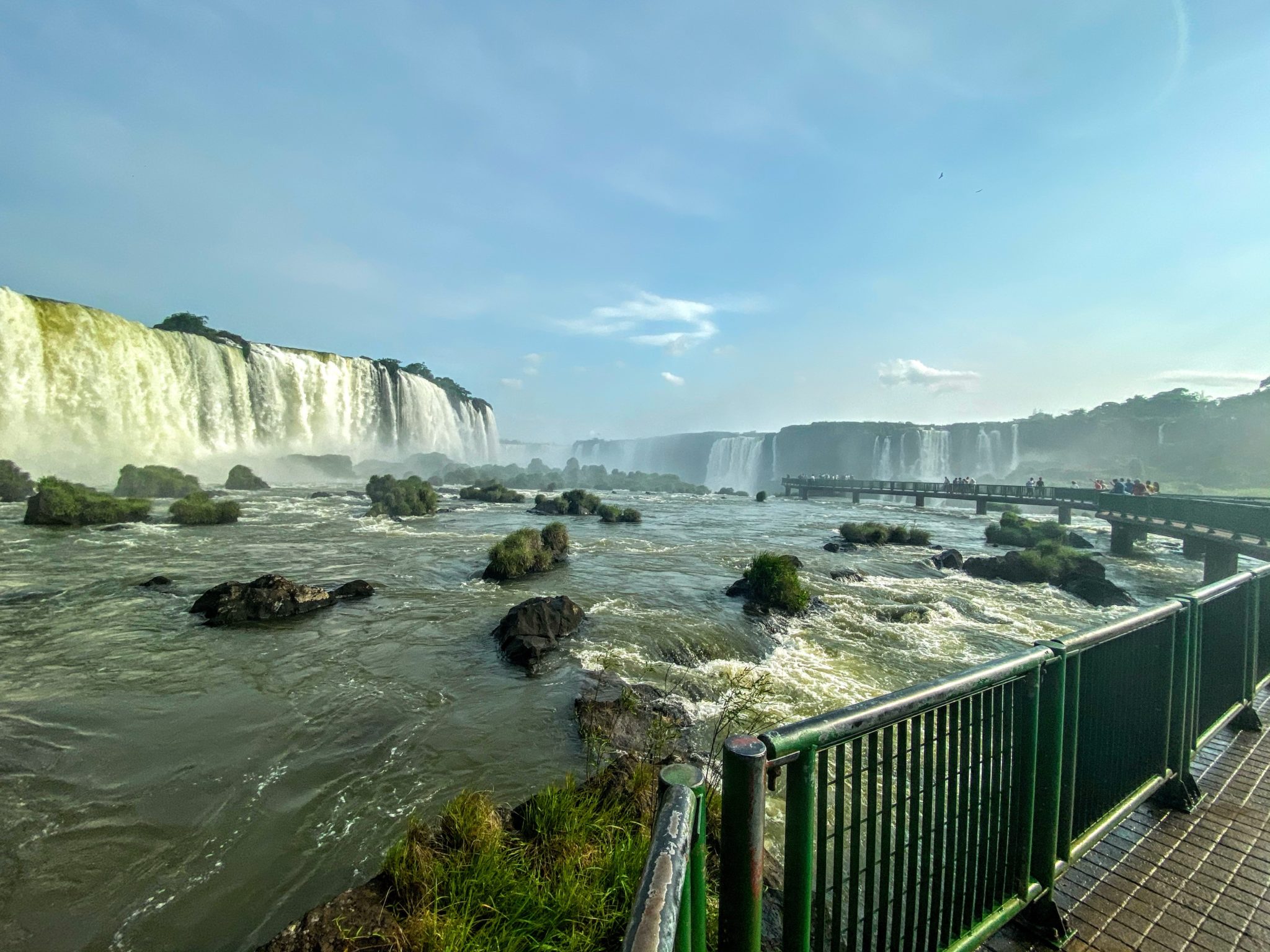
From the Brazilian side, there is less walking and less of grand reveal, but it offers a more complete panorama to fully see how big the whole area is. It was more populated, with more viewing points and even more selfie sticks. Don’t get me wrong, the view of the Falls is mesmerizing, but you have to take it in.
Both sides were memorable. We have an affinity towards Argentina because of the quiet river and rainforest walk that led to one of the most magnificent sights and sounds on earth—without the distractions of selfie sticks and tourists with matching T-shirts (some taking the tour boat directly into the face of one of the waterfalls).
But to be fair, our guide did have a bottle of champagne for us nearing sunset on the Brazilian side. That helped to tip the scales a bit.
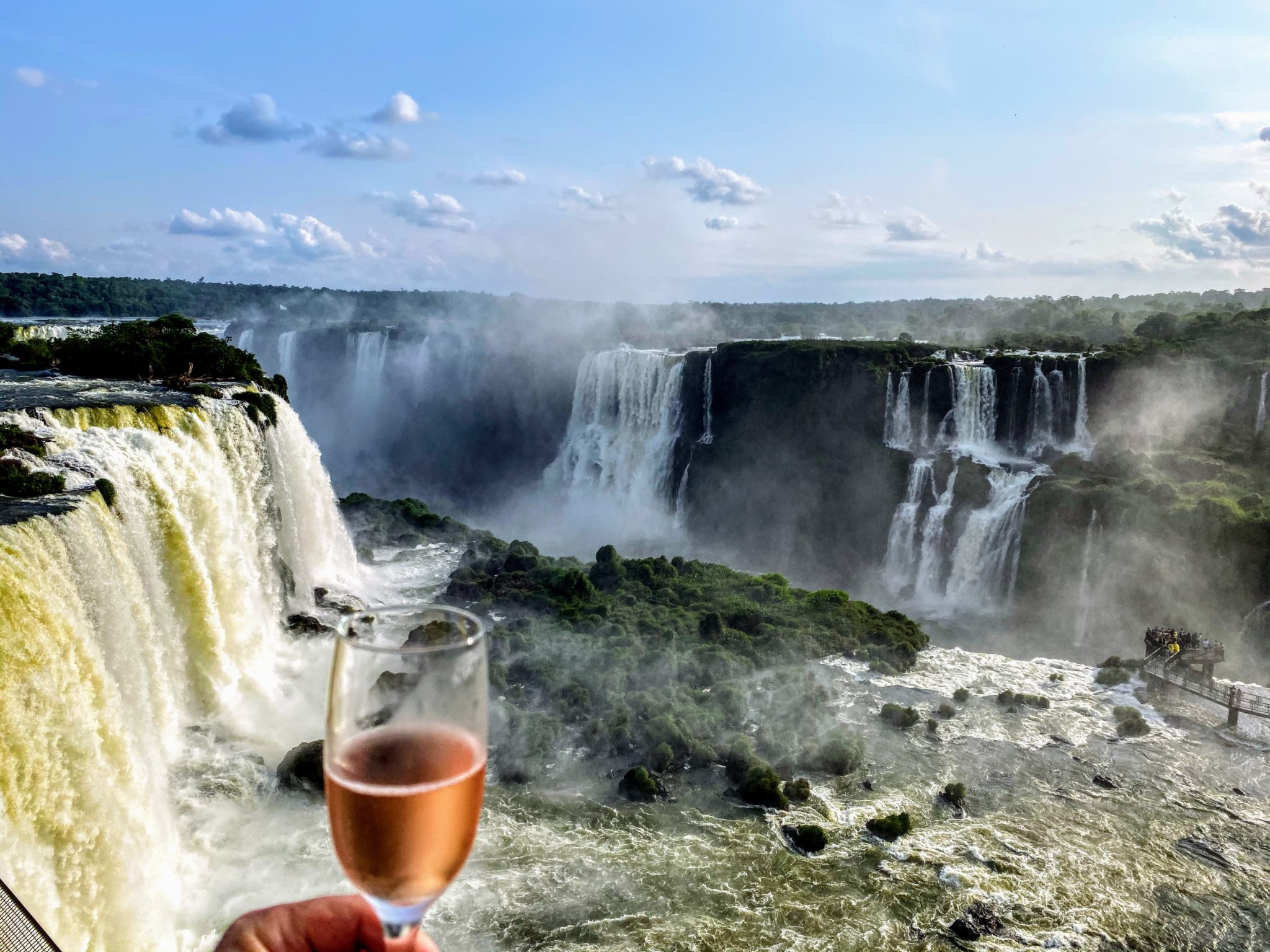 One year. The world’s three largest waterfalls.
One year. The world’s three largest waterfalls.
The ranking:
- Iguazu Falls
- Victoria Falls (Unfortunately, they are currently experiencing a drought. We were there at max water capacity.)
- Niagara Falls
Disclaimer: the problem with Niagara is that it’s too easy to get to (we like a challenge) and you can’t take a picture without a poorly designed 1960s chain hotel in the distance. Who let that happen?


